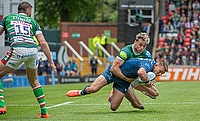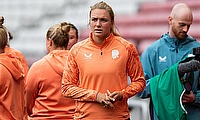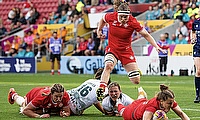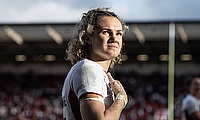More league stars likely to follow Sinfield
There was no shortage of murmurings last week, as rugby league legend Kevin Sinfield announced he would be leaving the 13-man code and joining Yorkshire Carnegie for the 2015/16 season.
The move continues a growing trend of players cashing in their chips in league and making the difficult transition to rugby union. With a Rugby World Cup on the imminent horizon and tournament expected to help the 15-man code grow to unprecedented levels, it begs the question if many more of Sinfield’s colleagues will soon join him in transitioning?
The Sinfield move in itself will not be too troubling to league bosses. At 34, the Leeds Rhino is in the twilight of his career and such was his love for that club that not playing against the Rhinos clearly factored heavily into his thinking about transitioning to union. The more pressing concern for league decision-makers will be the losses of stars in their prime, such as Sam Burgess and Sonny Bill Williams.
Players like Burgess and Williams were the poster boys of league, helping spread the appeal of the game globally, but ultimately neither could resist the temptations that union has to offer.
There is a significant difference in the financial clout of both sports, one which could yet become a gaping chasm should union continue to grow in popularity and TV deals continue to get bigger year on year. There are a handful of clubs in league, such as the Salford City Reds and a number of Australian teams, who have considerable spending power of their own, but they are certainly in the minority. League players’ careers are no longer than union players’ and with ever-growing concerns about the safety of both sports, ensuring financial security for their post-playing days cannot be criticised.
Beyond the finances, there is also the greater global scope of union for potential converts to consider. Every four years, 20 different teams contest the RWC, and although few can doubt New Zealand’s continued reign at the top of union’s pecking order, the tournament is usually fiercely competed by as many as six teams with realistic chances of victory. In its seven editions, the William Webb Ellis Cup has been won by four different nations, with no side lifting it more than two times.
This is simply not the case at the Rugby League World Cup, and although the tournament may boast an impressive 17 teams, there are just three realistic contenders for the trophy. The trio of Australia, England and New Zealand dominate league and, despite growth amongst nations such as Samoa, France and USA, are the only three sides likely to win the tournament for the foreseeable future. The tournament has been through a number of guises over the years, but in its 14 editions, it has only ever been won by Australia, Great Britain (England, Wales and Scotland now compete individually) and New Zealand, with Australia and Great Britain accounting for 13 of those 14 tournaments.
With just two major hotbeds of league in the world, Australia and northern England, there is simply not the demand for TV companies to shell out the big bucks for league tournaments, whether they are domestic or international. It’s this fact, more than any other, which prevents the sport from competing with union, the more global code.
The successes of Williams, Jason Robinson and Brad Thorn, all of whom converted and won RWCs, are fresh in the minds of many league players, and were no doubt pivotal in helping Burgess decide to make the move himself. The former league ace has enjoyed a solid, if unspectacular start to his career at Bath, as he continues to learn the nuances of his new sport. Other former league players currently enjoying productive careers in union include Israel Folau, Chris Ashton, Kyle Eastmond, Stephen Myler and Sam Lousi.
Rumours have linked a number of further league players to imminent moves, including George Burgess and Joshua Charnley, but as of yet, nothing concrete has come about. Sam Tomkins, who actually took part in a Barbarians game back in 2011, is another player never far away from the rumour mill, nor is Australian legend Greg Inglis, who added fuel to the fire in February when he admitted he was open to a move to union.
Whilst it’s unfortunate for league, it’s hard to imagine this production line of young league stars ending up in union finishing anytime soon. The faster paced and oft more expansive style of league creates skilful and physical backs that can thrive in union if their transitions are handled well.
The hard truth is that it’s a gold mine which nations such as England, Australia and New Zealand will continue to tap, as union leaves league further and further in its financial wake.








